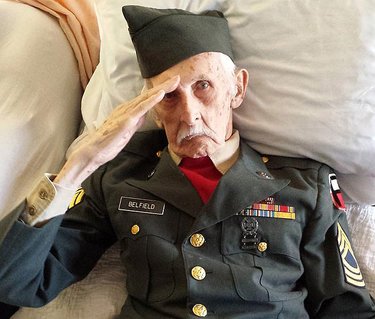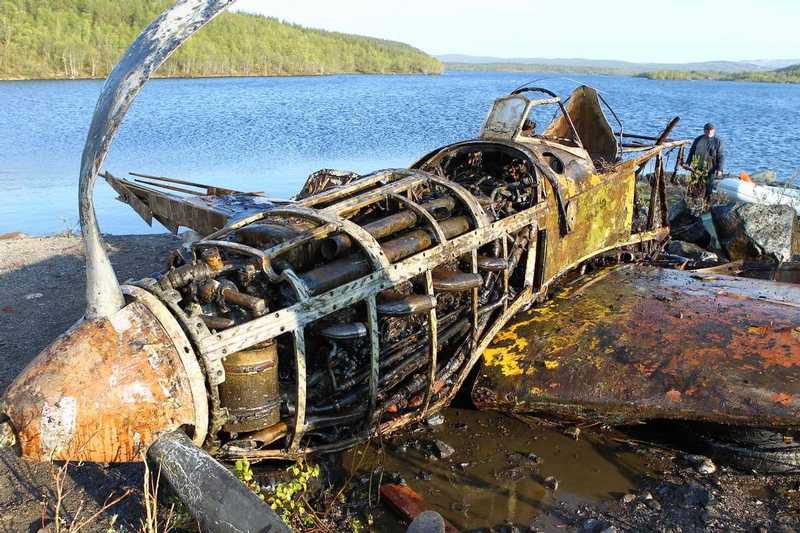 Here are some recent articles of interest that I found this week for U.S. Veterans. Enjoy!
Here are some recent articles of interest that I found this week for U.S. Veterans. Enjoy!
Seeing History: Vietnam War – Combat Footage via WHO-Tube
Watch video here…
Final Salute to History Maker: WWII veteran, 98, dons uniform for final salute, sadly died the next day
On Veterans Day, Justus Belfield donned his Army uniform one more time, even though he was too weak to leave his bed at an upstate New York nursing home.
The 98-year-old World War II veteran died the next day.
The Daily Gazette of Schenectady reports that Belfield had worn his uniform every Veterans Day since he and his wife moved into Baptist Health Nursing and Rehabilitation Center in Glenville, outside Albany, several years ago. On Tuesday, the former master sergeant wasn’t able to get out of bed to participate in the facility’s Veterans Day festivities, so he had the staff dress him in his uniform.
Read more here…
History Maker: WWII hero destroyed an enemy plane with a load of bricks
A 90-year-old veteran in Dundas goes by a curious nickname: The Brick Bomber. The nickname’s origins go back to one particular day in 1944 in the skies over Burma. Born in Hamilton in 1923, Art Adams wanted to become a pilot in the Royal Canadian Air Force, but his eyesight was poor. Instead, he joined up and served as a kicker, the evocatively named precursor to what today’s force calls a leading aircraftman. Planes would fly supplies to where the British and Allied forces were, trying to stop the advance of the Japanese through Burma to India. Once they found the British, Adams and his fellow ground crewmen would kick or push the supplies out of the plane to deliver them via parachute.
They’d open the doors of the DC-3 plane, and out would fall food, munitions, medical supplies — even donkeys (“liquored up” before the drop to keep them calm). “They had no way of transporting stuff in the jungle, except for the donkeys,” Adams said.
Read more here…
History Maker: How An American Pilot Survived A 6-On-One Dogfight During The Vietnam War
Being the first genuinely supersonic naval aircraft, the Crusader was a single seat, single engine swept fighter that introduced an unusual feature, the variable incidence wing. Armed with four Colt Mk 12 cannons, the F-8 was called “The last gunfighter.” This firepower, combined with its high thrust-to-weight ratio and with its good maneuverability, made the Crusader a good dogfighter.
The Crusader showed its ability in close combat during the Vietnam war, especially on Dec. 14, 1967. As explained by Barrett Tilman and Henk van der Lugt in their book VF-11/111 Sundowners, on that day, Lt. Cdr. Richard “Brown Bear” Schaffert, the VF-111 Sundowners operation officer during the 1967 deployment onboard the CV-34 USS Oriskany, were involved in an aerial combat which became a classic dogfight of the jet age, even if it did not result in any MiG kill. Schaffert was escorting an A-4E Skyhawk, piloted by Lt Charles Nelson, tasked to an Iron Hand anti-SAM (Surface to Air Missile) mission in the area between Hanoi and Haiphong, when “Brown Bear” saw two MiG-17s (“Fresco” based on their NATO designation).
Read more here…
History’s Machines: 15 Things You Never Knew About The B-17 Flying Fortress
The Boeing B-17 Flying Fortress is a four-engine heavy bomber aircraft developed in the 1930s for the United States Army Air Corps (USAAC). Competing against Douglas and Martin for a contract to build 200 bombers, the Boeing entry outperformed both competitors and exceeded the Air Corps’ expectations. Although Boeing lost the contract because the prototype crashed, the Air Corps was so impressed with Boeing’s design that they ordered 13 more B-17s for further evaluation. From its introduction in 1938, the B-17 Flying Fortress evolved through numerous design advances.
Learn the 15 facts here…
Follow the war as it happenend (November 17, 1944): Just another day for 2nd Emergency Rescue Squadron
Out in the remoteness of the Pacific the prospects of survival for any downed pilot were never going to be good. With the arrival of the USAAF 2nd Emergency Squadron flying out of Pitoe Strip in Morotai ( now Indonesia), the odds improved. Using OA-10A’s (equivalent to Navy PBY-5A’s) the Second Emergency Rescue Squadron retrieved over 300 airmen from death or capture during the first six months of its activity.
For the crew of the 2nd Emergency Rescue Squadron flying boats, 17 November 1944 was a day like many others over the wide expanse of the ocean and remote islands. For Ensign John Drex, USNR it was to be very memorable, and he himself seems to have had quite a tale to tell: Continue story here…
Thank you for reading (and sharing). Stay tuned for next week’s weekly review for U.S. Veterans.
 Here are some recent articles of interest that I found this week for U.S. Veterans. Enjoy!
Here are some recent articles of interest that I found this week for U.S. Veterans. Enjoy!
